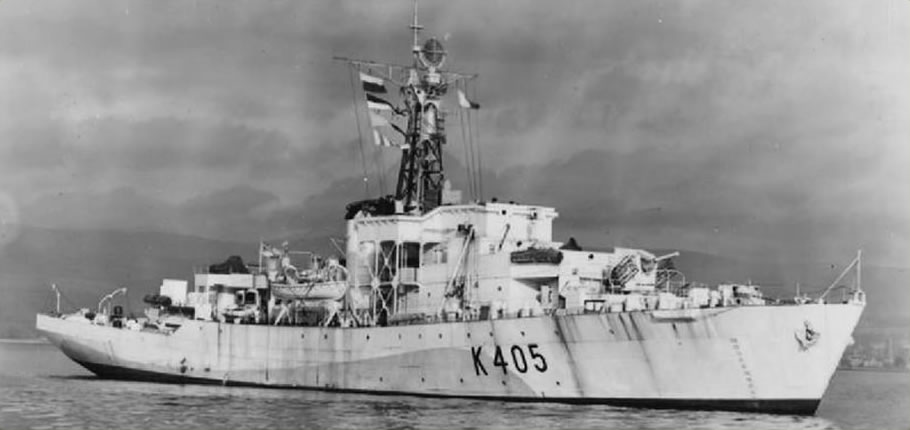
Corvettes – World War 2
Great Britain’s shipbuilding program of 1939 and 1940 required a convoy escort vessel which was capable of being built quickly, of mounting the then available anti-submarine equipment, of surviving the heavy seas around the British Isles, and of matching U-boat speeds. The design adopted was based upon a whale-catcher built in Middlesbrough.
The corvette was born out of dire need at the beginning of World War Two for something to fill the gap until the larger destroyers could be brought on line.
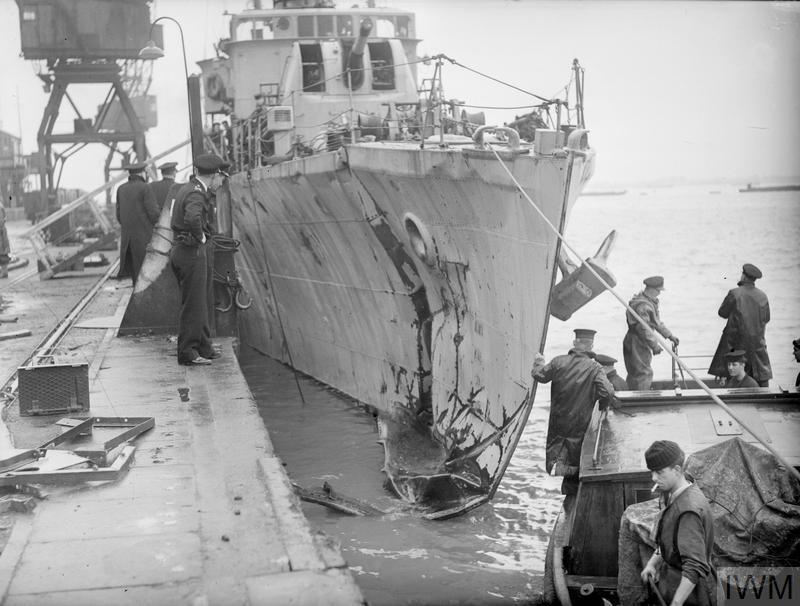
HMS Puffin, Harwich 1945.
The corvettes could sail at 16 knots while the surfaced U-boats could manage 17-18 knots. They were short and had a broad beam which allowed them to patrol in a fierce weather while most other escort vessels could only concentrate on survival. This hull design also made them “roll on a wet grass” as one quote has it, they were very lively at sea and during the worst storms even the most hardened naval veterans felt uneasy for sea-sickness. But they served very well and never gave the U-boats any break due to bad weather.
HMS Allington Castle
- Type. Corvette
- Class. Castle
- Pennant. K689
- Builder. Fleming & Ferguson
- Laid Down. 27/07/1943
- Launched. 29/02/1944
- Commissioned. 19/06/1944
- Speed. 16.5 knots
- Fate. Scrapped 20/12/1958

HMS Allington Castle
HMS Allington Castle was a Castle class Corvette. She was launched by Fleming and Ferguson Shipyard at Paisley, Scotland on 29 February 1944. She was commissioned on 19 June 1944 and served as a convoy escort until the end of the Second World War. After the war, she remained in the Home Fleet based at Fleetwood until 1947 when she moved to the Harwich Reserve. Refitted on the Tyne in August 1949 she returned to the Harwich Reserve until 1952 when she was transferred to West Hartlepool where she remained until 1958. She was sold and arrived for scrapping at Sunderland on 20 December 1958.
HMS Alnwick Castle
- Type. Corvette
- Class. Castle
- Pennant. K405
- Builder. George Brown
- Laid Down. 12/06/1943
- Launched. 23/05/1944
- Commissioned. 11/11/1944
- Speed. 16.5 knots
- Fate. Scrapped 09/12/1958
-
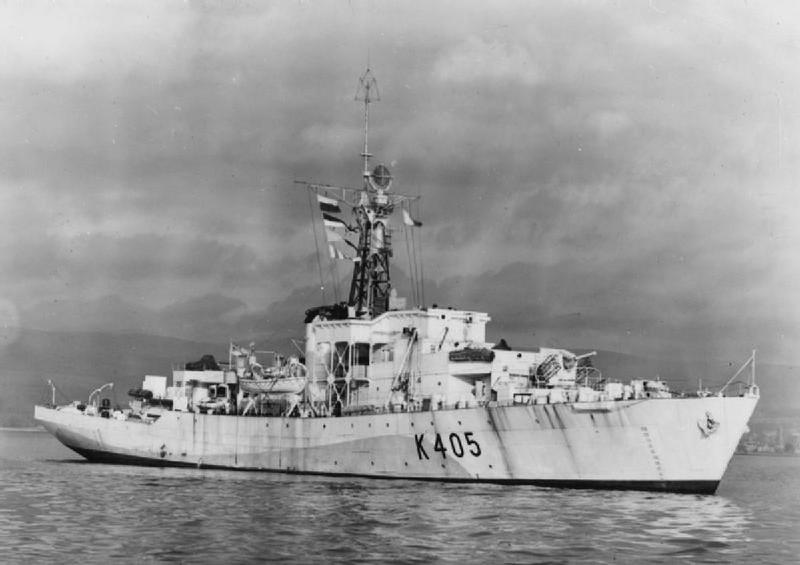
HMS Alnwick Castle
HMS Alnwick Castle was a Castle-class corvette. She was laid down on 12 June 1943 and launched by George Brown and Company at Greenock in Scotland on 23 May 1944. She was commissioned on 11 November 1944 and served as a convoy escort until the end of the Second World War. After the war, she was placed in reserve at Portsmouth where she remained until she was transferred to the reserve at Harwich in 1950 and then to Hartlepool until 1958, she was scrapped at Gateshead on 9th December 1958.
HMS Berkeley Castle
-
- Type. Corvette
- Class. Castle
- Pennant. K387
- Builder. Barclay Curle
- Ordered. 02/02/1943
- Laid Down. 23/03/1943
- Launched. 19/08/1943
- Commissioned. 18/11/1943
- Speed. 16.5 knots
- Fate. Scrapped 29/02/1956
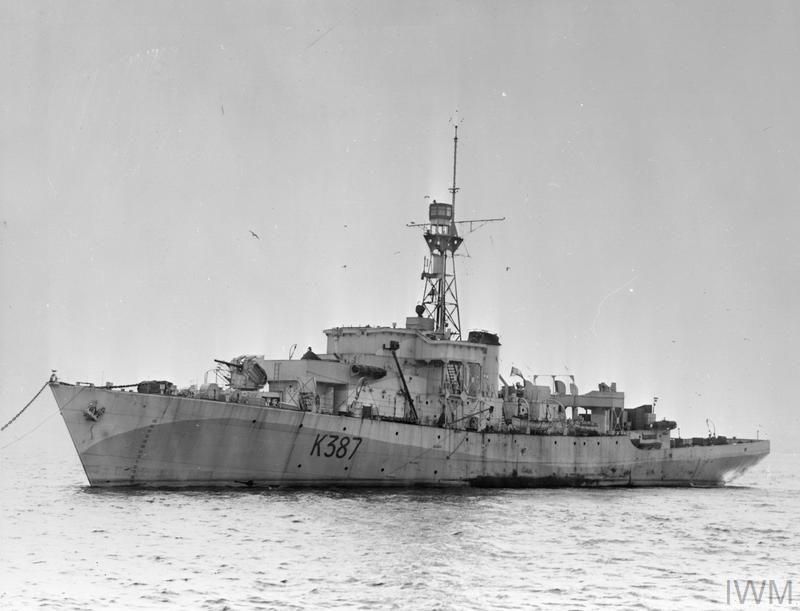
HMS Berkeley Castle
HMS Berkeley Castle was a Castle-class corvette she was laid down at the Barclay, Curle & Co. Ltd. shipyard in Glasgow on 23 March 1943 and launched on the 19th August 1943. She was then placed in reserve at Harwich between 1947 -1948. She suffered serious damage when she capsized in dock at Sheerness during severe flooding in February 1953 but was refloated and repaired. She was in reserve at Sheerness until 1956. She arrived at Grays in Essex on 29 February 1956 for scrapping.
HMS Candytuft
- Type. Corvette
- Class. Flower
- Pennant. K09
- Builder. Grangemouth Dry Dock
- Laid Down. 31/10/1939
- Launched. 08/07/1940
- Commissioned. 16/10/1940
- Speed. 16.5 knots
- Fate. Sold 1947
-
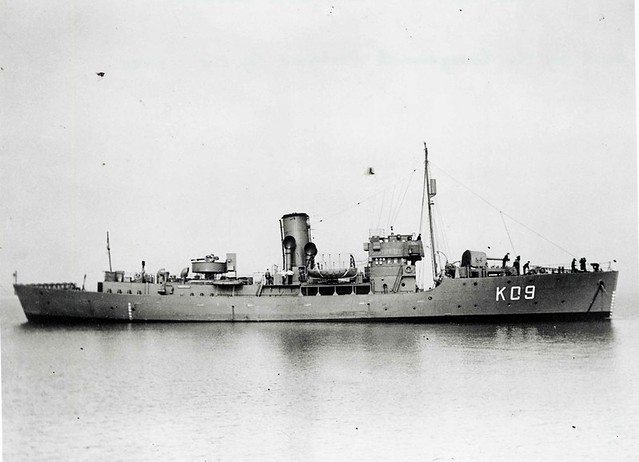
HMS Candytuft
HMS Candytuft was a Flower-class corvette, built for the Royal Navy during the Second World War, and was in service in the Battle of the Atlantic. In 1942 she was transferred to the United States Navy as part of the reverse Lend Lease arrangement and renamed USS Tenacity, one of the Temptress-class gunboats. With the end of hostilities she was returned to the Royal Navy and sold into mercantile service. Candytuft was involved in one convoy battle. In December 1940, she was part of the escort to convoy OG 46, during which two ships were sunk. In 18 months service, she escorted 13 North Atlantic and two Gibraltar convoys, assisting in the safe passage of over 500 ships.
HMS Dumbarton Castle
- Type. Corvette
- Class. Castle
- Pennant. K388
- Builder. Caledon Shipbuilding
- Ordered. 02/02/1943
- Laid Down. 06/05/1943
- Launched. 28/09/1943
- Fate. Scrapped 16/11/1960
-
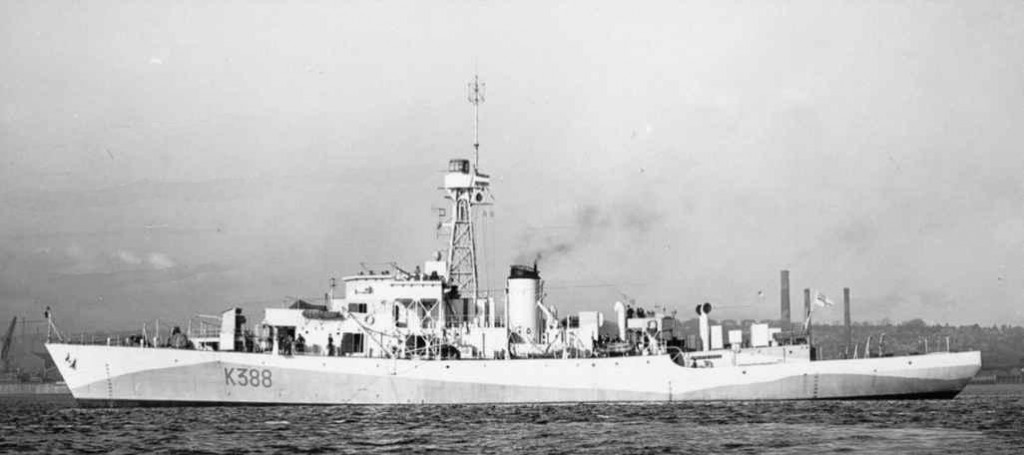
HMS Dumbarton Castle
HMS Dumbarton Castle was a Castle-class corvette of the Royal Navy. She saw action in the Battle of the Atlantic in the Second World War.
History: In reserve at Harwich 1950-1952.
HMS Farnham Castle
- Type. Corvette
- Class. Castle
- Pennant. K413
- Builder. John Brown
- Ordered. 19/12/1942
- Laid Down. 25/06/1943
- Launched. 25/04/1944
- Commissioned. 31/01/1945
- Speed. 16.5 knots
- Fate. Scrapped 31/10/1960
-
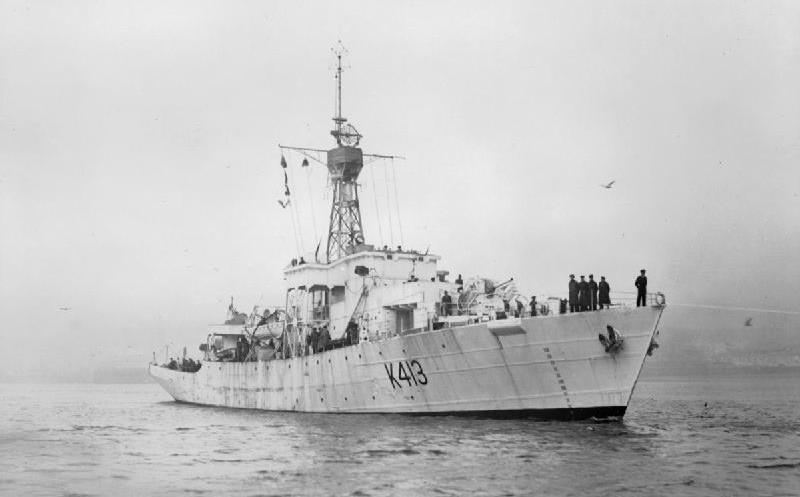
HMS Farnham Castle
HMS Farnham Castle was a Castle-class corvette; she was laid down at John Crown & Sons Ltd in Sunderland on 25 June 1943 and launched on 25 April 1944 before being commissioned on 31 January 1945.
History: 23/7/1949 Reserve Fleet at Harwich, 31/10/1960 arrived Gateshead for breaking.
HMS Puffin
- Type. Corvette
- Class. Kingfisher
- Pennant. L52
- Builder. Alexander Stephens
- Laid Down. 12/06/1935
- Launched. 05/05/1936
- Commissioned. 06/08/1936
- Speed. 20 knots
- Fate. Scrapped 1947
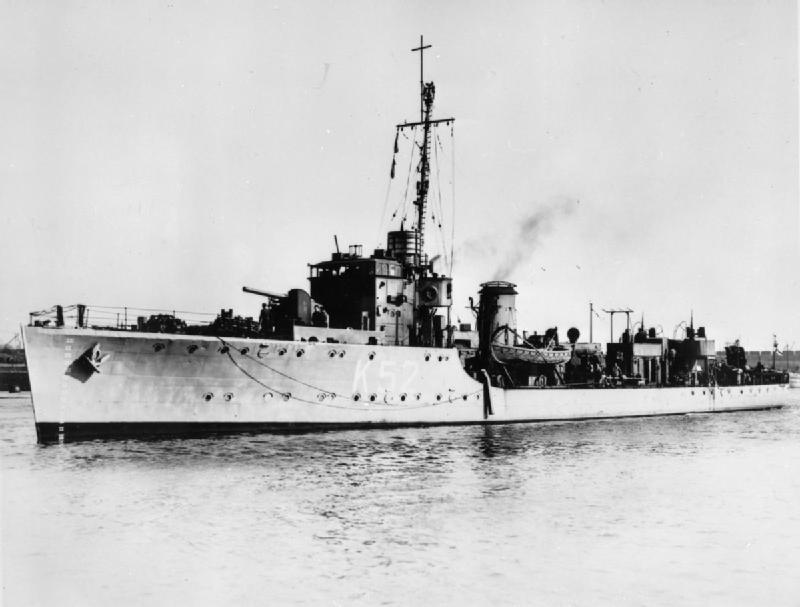
HMS Puffin
In the outbreak of war, Puffin, like the rest of her class, was rapidly up-gunned. First a multiple Vickers machine gun was mounted on the quarterdeck, and two single 20 mm Oerlikon guns, added as they became available, on single pedestal mounts on the deckhouse aft, with the machine gun being replaced later with a further pair of such weapons. As it became available the Centimetric Radar Type 271 was added – a target indication set capable of picking up the conning tower or even the periscope or snorkel of a submarine. Radar Type 286 air warning was added at the masthead.
On 25 October 1939 the German submarine U-16 was sunk in the English Channel near Dover by depth charges from Puffin and the ASW trawler HMS Cayton Wyke.
On 19 May 1940 Puffin along with a group of six trawlers and two destroyers took part in “Operation Quixote”, cutting commercial cables from the UK to Europe off the coast of Norfolk.
On 26 March 1945 Puffin under the command of Lt.Cdr. A.S. Miller, RNZNVR, rammed and sank a German Seehund midget submarine off Lowestoft. The impact caused the U-boat’s torpedoes to explode and Puffin was so badly damaged that she was written off as constructive total loss, and finally sold for scrapping in 1947.
HMS Sunflower
- Type. Corvette
- Class. Flower
- Pennant. K41
- Builder. Smith’s Dock Co
- Laid Down. 24/05/1940
- Launched. 18/08/1940
- Commissioned. 25/01/1941
- Speed. 16.5 knots
- Fate. Scrapped 1947
-
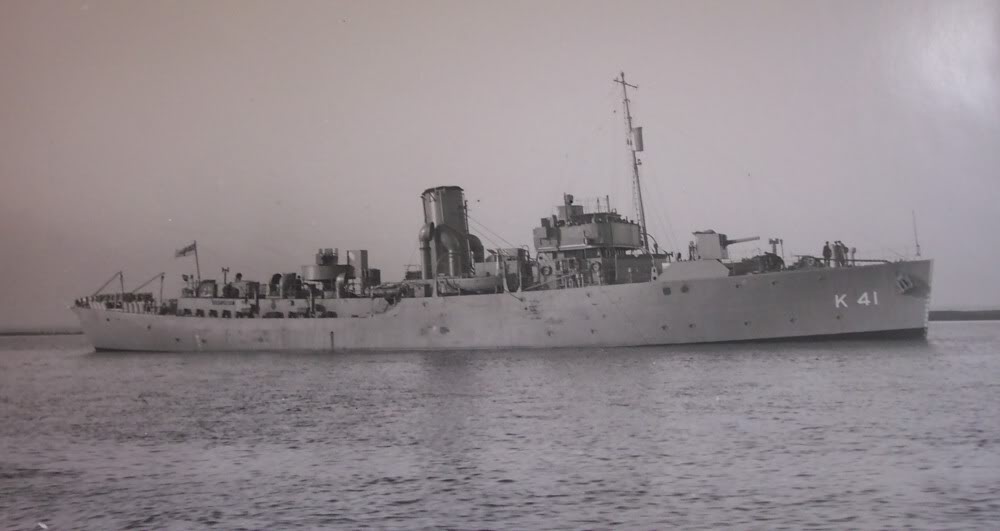
HMS Sunflower
HMS Sunflower was a flower-Class Corvette ordered from Smiths Dock Co at Middlesbrough on 31st August 1939 and laid down on 24th May 1940. The ship was launched on the 18th August 1940.
Sunflower remained in Reserve at Harwich until placed on the Disposal List in 1947. The ship was sold to Bisco for demolition by TW Ward at Hayle, Cornwall later that year and arrived at the breaker’s yard in August 1947.
HMS Violet
- Type. Corvette
- Class. Flower
- Pennant. K35
- Builder. W. Simons
- Ordered. 21/09/1939
- Laid Down. 21/03/1940
- Launched. 30/12/1940
- Commissioned. 03/02/1941
- Speed. 16 knots
- Fate. Scrapped 1970
-
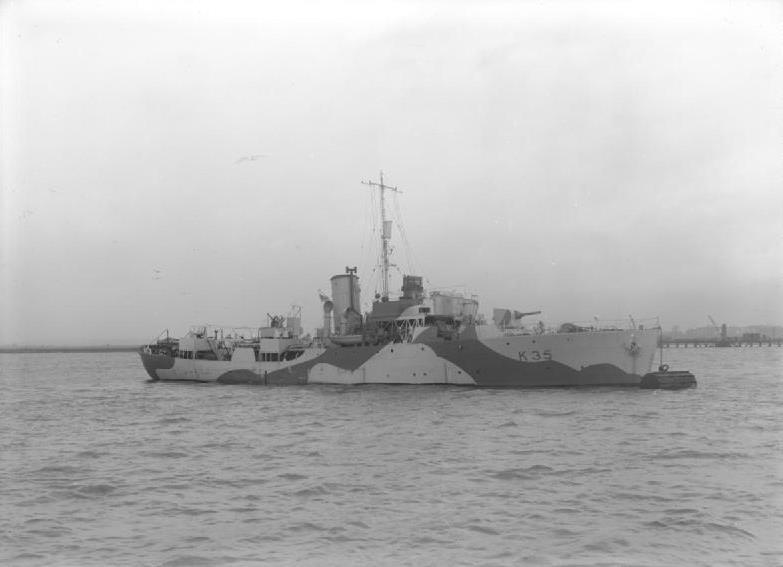
HMS Violet
HMS Violet was a Flower class corvette launched on the 30th December 1940 by W. Simons, Renfrew, Scotland.
History: 10 February 1946, arrived Harwich to reduce to category C reserve.
14 October 1947, towed from Harwich after being sold on 17 May to Zubi Shipping Co., London and renamed La Aguerra.
United States Navy
The American Flower-class corvettes were built for the United States Navy during World War II. In December 1941, after the US entry into World War II, the USN had a large building programme for anti-submarine warfare ships, but none nearing completion. To overcome this shortfall, the Royal Navy agreed to transfer a number of ASW ships to the USN, including ten Flower-class corvettes. These ships had already been in commission and had seen action during the Battle of the Atlantic.
USS Courage
- Type. Corvette
- Class. Flower
- Pennant. PG-70
- Builder. Harland & Wolff
- Ordered. 19/09/1939
- Laid Down. 14/11/1939
- Launched. 20/04/1940
- Commissioned. 03/04/1942
- Fate. Lost 1958

U.S.S Courage
HMS Heartsease was a Flower-class corvette of the Royal Navy. She served with both the Royal Navy and the United States Navy during the Second World War, with the latter navy as USS Courage.
She was ordered on 19 September 1939 and laid down at the yards of Harland and Wolff, Belfast, Northern Ireland on 14 November 1939. She was launched on 20 April 1940 and commissioned into service on 20 April 1940.
Decommissioned at Harwich, on 22 August 1945 and returned to the Royal Navy the next day.
She was put up for disposal and was sold into civilian service on 22 July 1946. She was renamed Roskva in 1951, Douglas in 1956 and finally Seabird in 1958.
Seabird was announced missing in December 1958 and a month later she was declared lost in the Celebes Sea, with the cause of her loss officially declared as “unknown”.
USS Fury
- Type. Corvette
- Class. Flower
- Pennant. PG-69
- Builder. Fleming & Ferguson
- Laid Down. 26/03/1940
- Launched. 05/09/1940
- Commissioned. 17/03/1942
- Fate. 22/08/1945
-
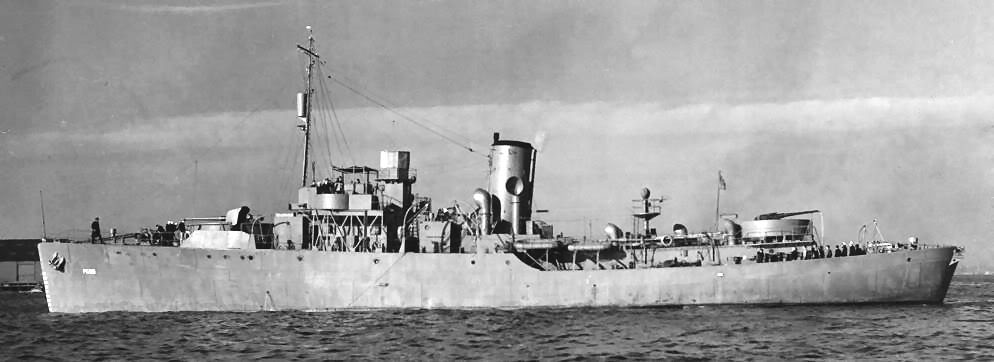
U.S.S Fury
Commissioned at Liverpool, on the 17 March 1942. Decommissioned at Harwich, on 22 August 1945 and returned to the Royal Navy the same day.
USS Impulse
-
- Type. Corvette
- Class. Flower
- Pennant. PG-68
- Builder. Cook Welton & Gemmell
- Ordered. 25/07/1939
- Laid Down. 13/03/1940
- Launched. 18/09/1940
- Commissioned. 10/03/1942
- Fate. 22/08/1945
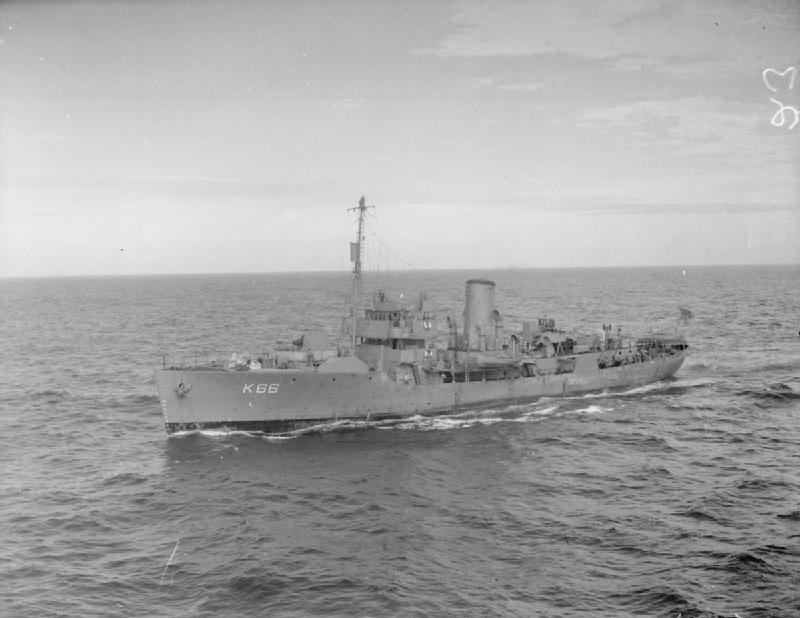
USS Impulse
HMS Begonia was a Flower-class corvette that served in the Royal Navy during World War II. In 1942 she was lent to the United States Navy and commissioned as USS Impulse.
The ship was built at Cook, Welton & Gemmell, of Beverley, as part of the 1939 Programme for the Royal Navy. she was ordered on 25 July 1939, laid down 13 March 1940 and launched on 18 September 1940.
She was commissioned as USS Impulse at London on 16 March 1942. Impulse arrived at Boston on 6 July 1945 for return to the Royal Navy. She departed on 1 August and arrived Harwich, on 15 August. Decommissioned on 22 August 1945.
The vessel was sold into civilian service on 22 July 1946, becoming the mercantile Begonlock. Resold in 1949 and renamed Fundiciones Molinao, the ship was renamed Astiluzu in 1951 and Rio Mero in 1956. She was wrecked off Punta de los Entinas, Spain, on 21 January 1970.
USS Ready
- Type. Corvette
- Class. Flower
- Pennant. PG-67
- Builder. Harland & Wolff
- Ordered. 19/09/1939
- Laid Down. 31/03/1940
- Launched. 21/03/1940
- Commissioned. 12/03/1942
- Fate. Stricken 17/09/1945
-

USS Ready
HMS Calendula was a Flower-class corvette, built for the Royal Navy during the Second World War, and was in service in the Battle of the Atlantic. In 1942 she was transferred to the United States Navy as part of the reverse Lend Lease arrangement and renamed USS Ready, one of the Temptress-class gunboats. With the end of hostilities she was returned to the Royal Navy and sold into mercantile service.
Following the entry of the United States into the war the US Navy was in need of anti-submarine warfare vessels, and to meet this need a number of ships were transferred from the Royal Navy as part of a reverse Lend-Lease arrangement. Calendula was commissioned into the USN on 12 March 1942 as USS Ready, one of the Temptress-class gunboats. For the remainder of the conflict Ready was employed as a convoy escort in the western Atlantic and Caribbean Sea.
With the ending of hostilities Ready was decommissioned on the 20th August 1945 at Harwich and returned to the Royal Navy in August 1945. As HMS Calendula once more she was stricken in September 1945.
USS Tenacity
- Type. Corvette
- Class. Flower
- Pennant. PG-71
- Builder. Grangemouth Dockyard
- Ordered. 25/07/1939
- Laid Down. 31/10/1939
- Launched. 08/07/1940
- Commissioned. 11/06/1942
- Fate. 22/08/1945
-
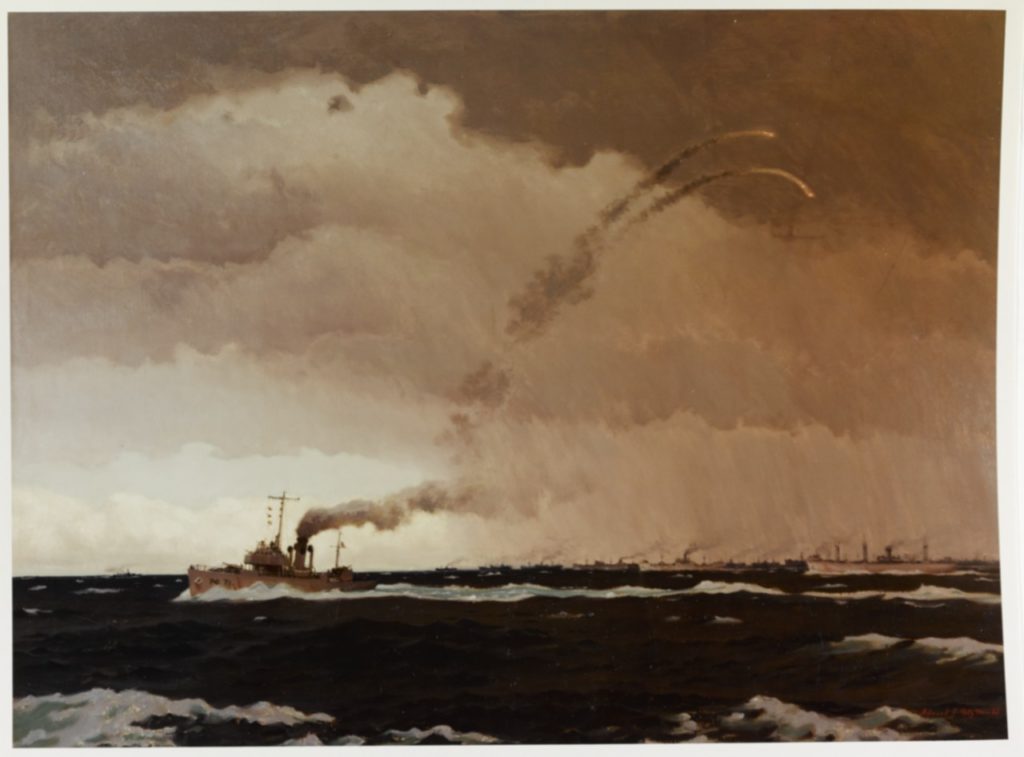
USS Tenacity
Acquired by the U.S. Navy on 4 March 1942 at New York. Commissioned after a refit on 11 June 1942. Decommissioned at Harwich, on 22 August 1945 and returned to the Royal Navy on 26 August 1945. Stricken by the U.S.N. on 17 September 1945. Sold on 9 July 1946.
We are adding more information to this site on a regular basis, if you wish to submit any photos or provide any information on naval vessels that were based or visited Harwich, then please use the contact page at the bottom of the screen.
Copyright Ownership.
We attempted to get the consent of copyright holders to use this material for nearly all of the photographs on the website.
In the few cases where names are available, a thorough search was made using telephone directories, photographic copyright directories, People Search and Google Area Search. None of the copyright owners could be traced in this way and we believe we have exhausted all reasonable avenues.
The consensus opinion of these authorities was that if any two of the following situations applied we would be deemed to have taken sufficient action to avoid infringing copyright laws:
- Reasonable efforts made to contact the copyright holder
- No financial gain will be made in relation to the photos
- A letter is obtained from present owner of photos
- There is a proviso included stating that if offence is caused document will be removed
The website owner undertakes to remove any photograph from the website where offence is caused. All the above conditions have therefore been met.
← Depot Ships – World War 1 Cruisers – World War 2 →
